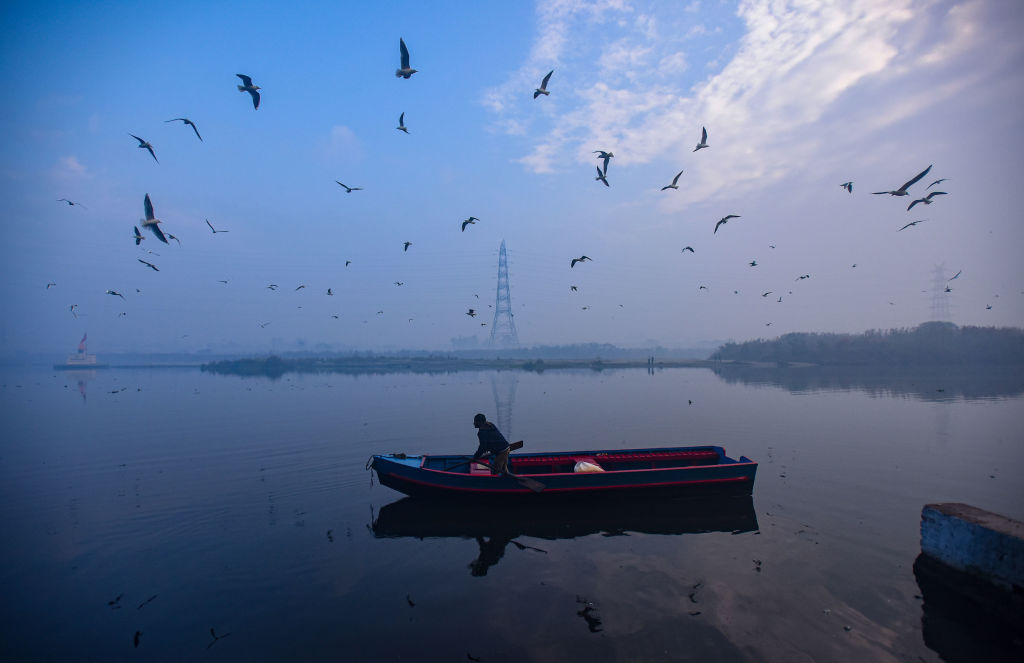
The NGT panel has asked the CPCB to identify point of sources of pollution in the Yamuna, after high levels of ammonia were detected PHOTO: Getty Images
The directions from the two-member green panel came after the Delhi Jal Board (DJB) alleged that Haryana has not yet stopped discharging industrial pollutants in the river despite repeated reminders, and urged the CPCB to take immediate remedial measures.
The committee cited a media report that said ammonia levels in the Yamuna at Wazirabad rose to 7 parts per million (ppm) against the permissible limits of 0.8 ppm.
It has also been reported that the reason primarily is the industrial effluent/untreated domestic sewage entering river Yamuna through Drains no. 6 and 8 and through the Rohtak regulator, the panel, comprising former Delhi Chief Secretary Shailaja Chandra and retired NGT expert member B S Sajwan, said.
The incidence of high ammoniacal nitrogen concentration is sporadic in nature and is generally reported during the winter months of December-February almost every year, the committee said.
Considering the recurring nature of the problem, it is incumbent upon the CPCB and Haryana State Pollution Control Board (HSPCB) to put in place a robust surveillance system, particularly during the critical winter months, for monitoring the activities of the industries and the functioning of STPs and also take coercive action against the defaulting units, it said.
The panel asked the CPCB to associate with HSPCB and depute a team to identify point sources of pollution leading to high levels of ammoniacal nitrogen in the Yamuna and submit a report by January 10.
The YMC has also taken up the matter with the Chief Secretary of Haryana, requesting him to direct authorities to take immediate action to prevent the flow of untreated sewage and industrial effluent from Haryana into river Yamuna.
The DJB had recently said it will consider moving court against the “apathetic” Haryana government as it is yet to stop the discharge of pollutants in the Yamuna which affects drinking water supply in the national capital.
The utility said it will soon start work to install ozonation units at the Chandrawal and Wazirabad plants to treat high levels of ammonia. High levels of ammonia in the Yamuna have prompted the DJB to reduce or stop water production at its plants at least five times this year. According to officials, the DJB’s water treatment plants can treat up to 0.9 parts per million ammonia concentration in the river water.
If the ammonia content is higher than this, the raw water is diluted with fresh water from the Upper Ganga Canal or the Munak Canal. If enough fresh water for dilution is not available, the production capacity of plants is reduced or they are temporarily shut.
The DJB said two canals in Haryana — DD-1 and DD-2 — carry contaminated water to the Yamuna.DD-2 is also known as dye drain because this canal contains a large amount of dye from industrial units. The two canals meet near Shimla Gujran village in Haryana’s Panipat district and merge into the Yamuna near Khojkipur village where ammonia levels often reach up to 40 ppm.
Apart from Carrier Lined Channel (CLC), Delhi Sub-Branch (DSB) and Yamuna water is also supplied to the city from DD-8 canal. A few kilometres along the DD-8 canal also flows another canal, DD-6 (at Pyau Manhari, Haryana) in which Haryana releases huge amounts of industrial and domestic waste.
These two canals are separated via sand sacks which are mostly in bad shape at many places. As a result, the contaminated water of DD-6 mixes with DD-8 and thus, the ammonia reaches Delhi, the DJB said.
Rival leagues trigger players’ suspensions and a legal battle in Indian golf, for now
Former Delhi CM Kejriwal criticises Centre, Delhi govt over worsening air pollution, alleges AQI manipulation
Delhi Police raids Nangloi unit producing fake engine oil, seizes over Rs 1 crore worth…
Mukesh Sharma reimagines digital components as living matter in his solo exhibition ‘Decoding Digital DNA’
Nine accused were arrested in coordinated raids as police uncovered organised networks supplying mule bank…
Nearly 1.57 lakh PUC challans issued in two months as Delhi steps up GRAP enforcement…